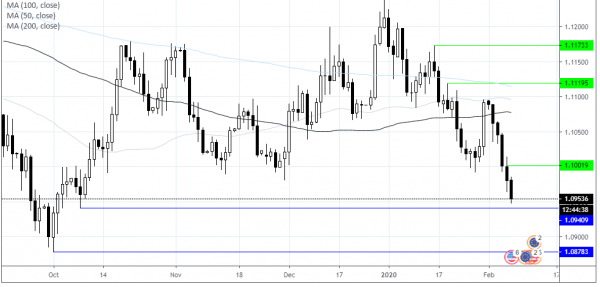The euro is under pressure in early trade on Friday following yet more disappointing data from Germany. German industrial production declined by more than expected -3.5% mom in December, greater than the -0.2% fall forecast. Annually production declined -8.7% well short of the -6% expected. French industrial output numbers also badly disappointed.
The weak industrial production data comes hot on the heels of dismal German factory orders which showed an unexpected decline to -2.1% mom.
The data confirms that the manufacturing slump continues in Europe’s largest economy. Whilst there was a temporary pick up in November, that proved to be short live and December figures are showing a continuation, if not an acceleration of the downward trend.
That said, it’s not all doom and gloom, soft indicators still point to a bottoming out and a stabilization in the manufacturing sector. However, that was before the coronavirus outbreak took hold. Supply chain disruptions and, Chinese economic growth is forecast to slow considerably which could push any form of recovery in the German manufacturing sector, however slow, firmly off track.
NFP up next
The dollar has been in favour across the past week thanks upbeat US data. The ADP private payrolls, ISM manufacturing and non-manufacturing all surprised to the upside. Traders are now looking ahead to non-farm payrolls. Expectations are for 160,000 jobs to have been created. Unemployment rate is expected to stay steady at 3.5%, whilst wages are due to increase 0.3% compared to 0.1% in December.
Levels to watch
EUR/USD is down 0.25% hovering around 4-month lows of $1.0950. Whilst it has dipped below -30 on RSI indicating over sold conditions, it trades firmly below its 50,100 and 200 sma with downside momentum.
Support can be seen at $1.0940 (low 8th Oct) prior to $1.0879 (low 4th Oct).
On the flip side, resistance could be at $1.10 (round number), opening the door to $1.1077 (200 sma) prior to $1.1112 (high 21st Jan)


 Signal2forex.com - Best Forex robots and signals
Signal2forex.com - Best Forex robots and signals




